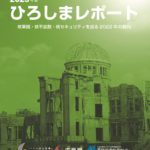Hiroshima Report 2018(2)核セキュリティ・原子力安全に係る諸条約などへの加入、参加、国内体制への反映
A)核セキュリティ関連の条約などへの加入状況核セキュリティ及び原子力安全に関する諸条約としては、核セキュリティサミットのコミュニケでもたびたび言及78されてきた核物質の防護に関する条約(核物質防護条約)と改正核物質防護条約、核によるテロリズムの行為の防止に関する国際条約(核テロ防止条約)に加えて、原子力の安全に関する条約(原子力安全条約)、原子力事故の早期通報に関する条約(原子力事故早期通報条約)、使用済燃料管理及び放射性廃棄物管理の安全に関する条約(放射性廃棄物等安全条約)、及び原子力事故または放射線緊急事態の場合における援助に関する条約(原子力事故援助条約)などがある。これらの条約について、調査対象国の関与を軸に検討を行ったところ、各条約の概要については以下のとおりである。
- 核物質防護条約(1987年発効):2018年1月時点で締約国数156カ国、批准国数44カ国79。同条約は平和目的のために使用される核物質の国際輸送に際し、適切な防護措置を採ること、また適切な防護措置が取られない場合には核物質の国際輸送を許可しないことを締約国に求めるとともに、権限のない核物質の受領、所持、使用、移転、変更、処分または散布により、人的・財産的被害を引き起こすことから、核物質の窃取などの行為を犯罪化することを要求している。
-
改正核物質防護条約(2016年発効):2018年1月現在、締約国数116カ国80。同条約の内容に関しては、2005年の核物質防護条約の改正により、防護措置の対象が国内の核物質や原子力施設にも拡大され、また法律に基づいた権限なしに行われる核物質の移動と、原子力施設に対する不法な行為が犯罪とされるべき行為に含められた。その結果、核物質防護条約から見て、その適用範囲は大幅に広がった。改正核物質防護条約は核セキュリティに関して法的拘束力を有する重要な存在となっており、そのために条約の発効後も引き続き未批准国への働きかけが求められる。
-
核テロ防止条約(2007年発効):同条約は悪意をもって放射性物質81または核爆発装置などを所持・使用する行為や、放射性物質の発散につながる方法による原子力施設の使用、または損壊行為を犯罪とすることなどを締約国に義務付けている。改正核物質防護条約とともに、今日の核セキュリティに関する法的枠組みを支える柱となっている。
-
原子力安全条約(1996年発効):同条約は原子力発電所の安全性の確保や安全性向上を目指す観点から、自国の原子力発電所の安全性確保のために法律上、行政上の措置を講じ、同条約に基づき設置される検討会への報告を実施し、また他の締約国の評価を受けることなどを締約国に義務付けている。
- 原子力事故早期通報条約(1986年発効):同条約は原子力事故が発生した際、IAEAに事故の発生事実や種類、発生の時刻や場所を速やかに通報し、情報提供することを締約国に義務付けるものである。
- 放射性廃棄物等安全条約(2001年発効):同条約は使用済燃料及び放射性廃棄物の安全性確保のために法律上、行政上の措置を講じ、同条約に基づいて設置される検討会への報告を実施し、また他の締約国の評価を受けることなどを義務付けている。
- 原子力事故援助条約(1987年発効):同条約は、原子力事故や放射線緊急事態に際して、事故や緊急事態の拡大を防止し、またその影響を最小限にとどめるべく、専門家の派遣や資機材提供などの援助を容易にするための国際的枠組みを定めている。
原子力安全条約以降の条約では、安全上の防護措置を課すことが定められている。こうした防護措置は核セキュリティ上の防護措置にも援用できることから、本報告書において核セキュリティに関連する国際条約とみなすこととする。以下、これらの国際条約について調査対象国の署名・批准状況を表3-4に示す。
B)「核物質及び原子力施設の物理的防護に関する核セキュリティ勧告」改訂5版(INFCIRC/225/Rev.5)
2011年にIAEAが発表したINFCIRC/225/Rev.5は、それ以前のINFCIRC/225/Rev.4と比べて、核セキュリティ体制強化の観点から、勧告措置として多くの改善点が織り込まれた。主なポイントとしては、立入制限区域の設定、等級別手法と深層防護の深化、遠距離からのスタンドオフ攻撃や空からの脅威に対する防護措置、内部脅威者の脅威に対する防護、及びその対策の1つとしての核セキュリティ文化の醸成、中央警報ステーションの非常時における基本機能継続のための冗長性確保などが挙げられる。また、改正核物質防護条約への対応を明確化させ、不法移転や核物質の盗取、不法取得に対する防護、また妨害破壊行為に対する防護などを具体的に示した。さらに悪意ある行為の阻止のために、危機管理計画策定や対抗部隊による演習の評価などに言及したほか、個人の信頼性確認について国が方針を示すよう勧告した。そのほか、核セキュリティに係る危機管理計画と、原子力安全に係る緊急時の計画とを区分するなどの変更が行われている。
INFCIRC/225/Rev.5は核セキュリティサミットの開始と時期を前後して公開されたこともあり、同サミットの開催にあわせて、各国がINFCIRC/225/Rev.5の勧告措置に準拠した物理的防護措置の導入を対外的に宣言する傾向が生じた。そして、結果的にこうした傾向は2016年の最後の核セキュリティサミット(ワシントン核セキュリティサミット)まで続いた82ことからも、同勧告措置の導入に対する各国の関心の高さが裏付けられたと考えられる。以上のような理由から、調査対象国における今日の核セキュリティ体制を評価する上で、同指針の勧告措置の取り入れも重要な指標になり得る。本調査では主に2017年の第61回IAEA総会における各国声明や、IAEA主催による核物質及び核関連施設防護に関する国際会議、第10回シニアレベルでの核テロリズムに対抗するためのグローバル・イニシアティブ(GICNT)総会などでのステートメントや各国規制当局関係者の発表といった公開情報を参照し、評価を行った。
INFCIRC/225/Rev.5の勧告措置適用に関する各国の状況
核セキュリティサミットが終焉を迎えた後、INFCIRC/225/Rev.5の勧告措置の導入や適用に関する情報発信の機会は相対的に減少している。その理由が、2011年の策定から7年あまりが経過したINFCIRC/225/Rev.5に関して新たにアピールすべき事項が少ないためなのか、それとも核セキュリティサミットなど情報発信のプラットフォームが縮小した結果、その適用状況に言及する機会自体が減っているからなのかは定かではない。そのなかで、調査対象国で直接的・間接的に同勧告措置への対応について言及のあった事項は以下のとおりである。

はじめに法令整備の分野について、中国は核セキュリティと原子力安全とのバランスに配慮するとの前提のもと、2017年に原子力安全法(Nuclear Safety Act)を全国人民代表者会議で採択し83、核セキュリティ条例(Regulation on Nuclear Security)についても2016年にパブリックコメントを終了し、法案成立を待つ段階にある84。英国では2017年に原子力規制室(Office of Nuclear Regulation)が事業者に対する新たな規制枠組みとして、核セキュリティ評価原則(SecurityAssessmentPrinciples)85を設けた86。ナイジェリアは核物質防護に係る国内法をINFCIRC225/Rev.5に基づき2015年に起草した87ほか、独立した規制当局(ARSN)を設置するとともに、核セキュリティ及び原子力平和利用に係る法令を採択した88。サウジアラビアは、独立した核及び放射性物質の安全に係る規制当局を2018年の第3四半期までに設置する見通しであり、関連する国内法もIAEAによるレビューを踏まえつつ整備する予定だとされる89。UAEはINFCIRC/225/Rev.5に基づき、核物質防護及び原子力施設防護にかかる規制を2010年に制定し、2016年にこれを改定した90。パキスタンは既に包括的な核セキュリティレジームを導入しており、これに対してIAEAのガイダンス文書やベストプラクティスに則り、定期的な見直しを行ってきた91。なお、INFCIRC/225/Rev.5に直接関わる事項ではないが、国内での原子力施設へのドローン問題への対応として、フランスが核セキュリティの文脈でドローンの使用に関する法令を2016年に採択した92ことは、核物質防護との関連で注目に値する新たな動きだと言えよう。
核物質防護措置の強化の分野ではロシアが2015年にロスアトム(ROSATOM)による核関連施設での核物質防護システムの有効性評価に係るガイドラインを設け、この評価手段としてコンピュータープログラム「Vega-2」及び「Polygon」を導入した93。イスラエルはIAEAのガイドラインに基づき、核施設のセキュリティ、並びに研究及び応用面での核物質防護を実施した94。ベルギーは予定していた核関連施設への武装警察の常駐が遅延しているのを補うべく、同施設を軍の警護下に置いた95。パキスタンでは核物質防護及び核関連施設の防護に係る規制の整備が進められており、今後省庁間でのレビュープロセスを経て、最終的な承認を得る見通しだとされる96。なお、2017年10月、物理的防護システムの有効性評価にかかる地域トレーニングコースが韓国・大田広域市で開催された97。
妨害破壊行為に対する物理的防護措置としては、パキスタンは陸・海・空のコンポーネントからなる、目的別の独立した核セキュリティ専門部隊を発足させており、さらに専用の早期警戒システムを設置した98。フランス内務省は核セキュリティ専門部隊(COSSEN)を発足させ、輸送の安全及び核物質防護体制の強化を進めている99。韓国核不拡散核物質管理院(KINAC)ではバーチャルリアリティを活用し、核関連施設に対する妨害破壊行為への評価システム構築を実施した100。中国は即応可能な原子力緊急事態レスキューチームを発足させた101。
サイバーテロへの対応として、英国では原子力規制室が2017年に設けた核セキュリティ評価原則において、原子力産業におけるサイバー脅威対策への強化が打ち出された102。ベルギーは2014年にサイバーセキュリティセンターを設置し、原子力安全当局とのさらなる連携強化が期待されるとしている103。ドイツは2015年にコンピュータセキュリティに関する国際会議を開催し、その後も当該分野に関するガイダンスの作成を継続し、成果が上がっている旨発表している104。なお、2017年4月には原子力施設での産業制御システムのコンピュータセキュリティに関する地域トレーニングコースがブラジル・リオデジャネイロで開催された105ほか、5月には原子力発電所の計測・制御システムにおけるコンピュータセキュリティのエンジニアリング及び設計に関する技術会議が英国・グロスターで開催された106。なお、原子力関連施設におけるサイバーセキュリティは、これまでの事案発生の事実に関する情報開示自体が限定的であり、問題の本質を把握するのが難しいことから、適切なリスクアセスメントや対応が十分行われていない可能性が指摘107されており、核セキュリティ強化における新たな課題になっていると言えよう。
輸送の安全について、2017年10月、核物質の輸送の安全にかかる国際トレーニングコースがドイツ・カールスルーエで開催された108ほか、12月には第35回輸送の安全基準に関する技術会合がウィーンで開催されている109。
内部脅威対策の分野では、日本が2016年に任意ではあるが、個人の信頼性確認制度を導入したほか、防護区域内での部内者の疑わしき行為への監視措置強化を発表している110。また、2017年2月27日から3月3日にかけて、内部脅威の予防及び防護措置に関する地域トレーニングコースが日本の東海村で実施された111。INFCIRC/225/Rev.5において法制化が勧告された内部脅威対策であるが、部内者の身元調査だけで内部脅威が防げる訳ではないとの指摘112もあり、やはり今後も注目すべき重要課題であると言えよう。
核セキュリティ文化では、インドがHomi Bhabha国立研究所における1年間の科学者及び技術者への研修を通じて、核セキュリティ文化教育を実施している113。また2017年10月、核セキュリティ文化強化のためのソリューション研究開発プロジェクト関連会合がウィーンで開催された114。

[78] “Nuclear Security Summit 2016 Communiqués,” 2016 Washington Nuclear Security Summit, April 1, 2016.
[79] Convention on the Physical Protection of Nuclear Material, January 11, 2018, http://www.iaea.org/Publications/ Documents/Conventions/cppnm_status.pdf.
[80] Amendment to the Convention on the Physical Protection of Nuclear Material, January 11, 2018, https://www. iaea.org/Publications/Documents/Conventions/cppnm_amend_status.pdf.
[81] International Convention for the Suppression of Acts of Nuclear Terrorism, United Nations, 2005, https://treaties.un.org/doc/db/terrorism/english-18-15.pdf, Article 1.
[82] “Highlights of National Progress Reports,” 2016 Washington Nuclear Security Summit, April 5, 2016, http://www. nss2016.org/news/2016/4/5/highlights-from-national-progress-reports-nuclear-security-summit.
[83] China National Statement at the 61th General Conference of the IAEA, September 2017, https://www.iaea.org/ sites/default/files/gc61-china-final-stat.pdf.
[84] Jia Jinlei, “The Legal and Regulatory Systems for Nuclear Security in China,” paper presented at the International Conference on Physical Protection of Nuclear Material and Nuclear Facilities, November 13-17, Vienna, Austria.
[85] “New Internal Guidance – Security Assessment Principles (SyAPs),” Department for Business, Energy & Industrial Strategy-Office for Nuclear Regulation, April 2017, http://www.onr.org.uk/documents/2017/rpc-3625-1-decc-onr.pdf.
[86] UK National Statement at the 61th General Conference of the IAEA, September 2017, https://www.iaea.org/sites/ default/files/gc61-uk-statement.pdf.
[87] Nasiru-Deen A. Bello, “Legislative and Regulatory Framework for the Physical Protection of Nuclear Material and Nuclear Facilities in Nigeria,” paper presented at the International Conference on Physical Protection of Nuclear Material and Nuclear Facilities, November 13-17, Vienna, Austria, https://www.iaea.org/sites/default/files/17/11/cn- 254-bello2-presentation.pdf.
[88] Republic of Niger National Statement at the 61th General Conference of the IAEA, September 2017, https://www. iaea.org/sites/default/files/gc61-niger-statement_fr.pdf.
[89] Kingdom of Saudi Arabia Statement by HE Dr. Hashim Yamani, President, King Abdullah City for atomic and Renewable Energy at the Nuclear Power in the 21st Century – International Ministerial Conference, Abu Dhabi, United Arab Emirates, October 30-November 1, 2017, https://www.iaea.org/sites/default/files/cn-247-saudi-arabia- statement_ar.pdf.
[90] Sara Al Saadi, “Nuclear Security Regulatory Authorization and Assessment Process for Barakah NPP in United Arab Emirates,” paper presented at the International Conference on Physical Protection of Nuclear Material and Nuclear Facilities, November 13-17, Vienna, Austria, https://www.iaea.org/sites/default/files/17/11/cn-254-alsaadi- presentation.pdf.
[91] Statement by Khalil Hashmi, Director General (Disarmament), MFA Head of Pakistan Delegation at the 10th Plenary Meeting of the GICNT, June 2, 2017, http://www.gicnt.org/statements/documents/2017-plenary/Pakistan.pdf.
[92] “National Statement by France” at the 10th Plenary Meeting of the GICNT, June 1, 2017, http://www.gicnt.org/ statements/documents/2017-plenary/France.pdf.
[93] Alexander Izmaylov, “Systematic Aspects of High Effective Physical Protection Systems Design for Russian Nuclear Sites,” paper presented at the International Conference on Physical Protection of Nuclear Material and Nuclear Facilities, November 13-17, Vienna, Austria, https://www.iaea.org/sites/default/files/17/11/cn-254-izmaylov- presentation.pdf.
[94] Statement by Mr. Zeeb Snir, Head, Israel Atomic Energy Commission at the 61th General Conference of the IAEA, September 2017, https://www.iaea.org/sites/default/files/gc61-israel-statement.pdf.
[95] Declaration Nationale Belge, Intervention de Monsieur Jan Bens, Directeur Général de l’Agence Fédérale de Contrôle Nucléaire, 61ème Session De La Conférence Générale De L’AIEA, Septembre 20, 2017, https://www.iaea.org/ sites/default/files/gc61-belgium-statement.pdf.
[96] Syed Majid Hussain Shah, “Development of Physical Protection Regulatory Requirements in Pakistan,” paper presented at the International Conference on Physical Protection of Nuclear Material and Nuclear Facilities, November 13-17, Vienna, Austria, https://www.iaea.org/sites/default/files/17/11/cn-254-shah-presentation.pdf.
[97] Regional Training Course on Introduction to Physical Protection System Effectiveness Evaluation, October 16 -20, 2017, https://www.iaea.org/events/regional-training-course-on-introduction-to-physical-protection-system- effectiveness-evaluation.
[98] Statement by the Leader of the Pakistan Delegation, 61th Annual General Conference of the IAEA, September 18- 22, 2017, https://www.iaea.org/sites/default/files/gc61-pakistan-statement.pdf.
[99] S. Basille, “Specialized Command for Nuclear Security: Coordinate the Response of State Security Forces to Nuclear Threats and Breaches,” paper presented at the International Conference on Physical Protection of Nuclear Material and Nuclear Facilities, November 13-17, Vienna, Austria,https://www.iaea.org/sites/default/files/17/11/cn- 254-basille-presentation.pdf.
[100] Yeonwook Kang, “TESS: Tool for evaluation security system Introduction and Development status, paper presented at the International Conference on Physical Protection of Nuclear Material and Nuclear Facilities,” November 13-17, Vienna, Austria, https://www.iaea.org/sites/default/files/17/11/cn-254-kang2-presentation.pdf.
[101] Remarks by Chinese Delegation at the 10th Plenary Meeting of the GICNT, June 1, 2017, http://www.gicnt.org/ statements/documents/2017-plenary/China.pdf.
[102] UK National Statement at the 61th General Conference of the IAEA, September 2017, https://www.iaea.org/ sites/default/files/gc61-uk-statement.pdf.
[103] Declaration Nationale Belge, Intervention de Monsieur Jan Bens, Directeur Général de l’Agence Fédérale de Contrôle Nucléaire, 61ème Session De La Conférence Générale De L’AIEA, Septembre 20, 2017, https://www.iaea.org/ sites/default/files/gc61-belgium-statement.pdf.
[104] Germany Statement at the 61th General Conference of the IAEA, September 19, 2017, https://www.iaea.org/ sites/default/files/gc61-germany-statement.pdf.
[105] Regional Training Course on Computer Security for Industrial Control Systems at Nuclear Facilities, April 24 – 28, 2017, https://www.iaea.org/events/regional-training-course-on-computer-security-for-industrial-control-systems- at-nuclear-facilities.
[106] Technical Meeting on Engineering and Design Aspects of Computer Security in Instrumentation and Control Systems for Nuclear Power Plants, May 8-12, 2017, https://www.iaea.org/events/technical-meeting-on-engineering- and-design-aspects-of-computer-security-in-instrumentation-and-control-systems-for-nuclear-power-plants.
[107] Caroline Baylon, Roger Brunt and David Livingstone, “Chatham House Report Cyber Security at Civil Nuclear Facilities: Understanding the Risks,” September 2015, https://www.chathamhouse.org/sites/files/chathamhouse/field/ field_document/20151005CyberSecurityNuclearBaylonBruntLivingstone.pdf.
[108] International Training Course on Security of Nuclear Material in Transport, October 9-13, 2017, https://www. iaea.org/events/international-training-course-on-security-of-nuclear-material-in-transport.
[109] 35th Technical Meeting of the Transport Safety Standards, December 11-15, 2017, https://www.iaea.org/ events/35th-technical-meeting-of-the-transport-safety-standards.
[110] Naohito Uetake, “Current Nuclear Security Regime and Regulatory Framework in Japan-Efforts for Compliance with NSS-13 and CPPNM Amendment-,” paper presented at the International Conference on Physical Protection of Nuclear Material and Nuclear Facilities, November 13-17, Vienna, Austria, https://www.iaea.org/sites/default/ files/17/11/cn-254-uetake-presentation.pdf.
[111] Regional Training Course on Preventive and Protective Measures against Insider Threats, February 27-March 3, 2017, https://www.iaea.org/events/regional-training-course-on-preventive-and-protective-measures-against-insider- threats.
[112] Matthew Bunn and Scott D. Sagan, “A Worst Practices Guide to Insider Threats: Lessons from Past Mistakes,” American Academy of Arts & Sciences, 2014, https://www.amacad.org/multimedia/pdfs/publications/ researchpapersmonographs/insiderThreats.pdf, p. 4.
[113] Jayarajan Kutuvan, Building Robust Nuclear Security Culture in Nuclear Research Centers, paper presented at the International Conference on Physical Protection of Nuclear Material and Nuclear Facilities, November 13-17, Vienna, Austria, https://www.iaea.org/sites/default/files/17/11/cn-254-kutuvan-presentation.pdf.
[114] Technical Meeting to Share Experiences Related to Activities under the Coordinated Research Project Development of Nuclear Security Culture Enhancement Solutions, October 23-25, 2017, https://www.iaea.org/events/ technical-meeting-to-share-experiences-related-to-activities-under-the-coordinated-research-project-development-of- nuclear-security-culture-enhancement-solutions.






